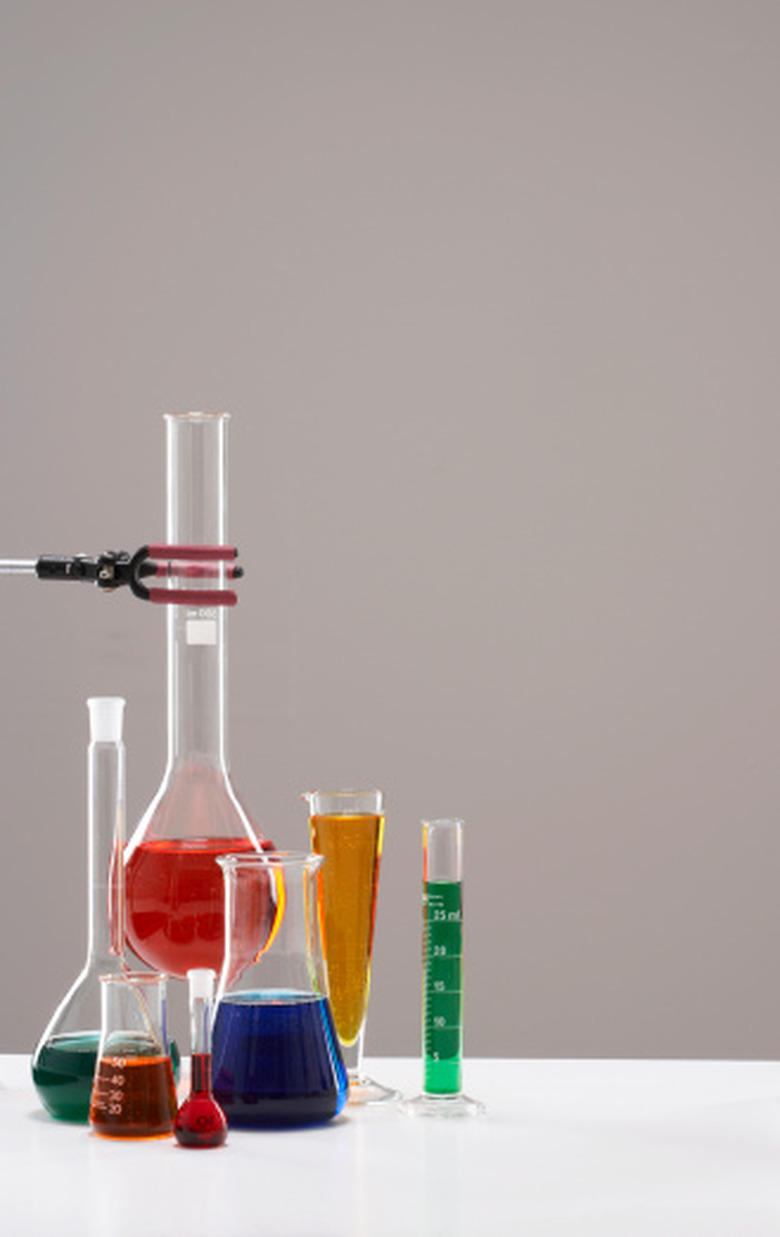IB Chemistry Lab Ideas
The International Baccalaureate (IB) program includes a college-level chemistry curriculum with a heavy lab component. The high school IB Chemistry course covers topics such as atomic theory, bonding, acids/bases, kinetics and organic chemistry. All of these topics are studied in the lab as well as in the classroom. IB chemistry labs require college-level laboratory research skills.
Reactions
Reactions
Chemical reactions are changes of chemical structure that occur when two or more elements come into contact. There are four basic types of reactions: synthesis, decomposition, single replacement and double replacement. IB chemistry labs get students to initiate reactions using different materials. One idea for a lab is to have students create liquid eruptions using materials (such as diet cola and Mentos mint candies), then measure the strength of the eruption using a pressure meter (see Resource 1).
Acids and Basis
Acids and Basis
Acids and bases are substances that react with each other. Acids have a pH of less than 7, while bases have a pH of greater than 7. Since most aqeous solutions have an acid or base rating, and many high school labs have pH readers, it is easy to find materials for experiments with acids and bases. One project on acids and bases involves comparing the pH levels of urban lakes to those of rural lakes. To do this test, gather water samples and bring them back to the lab, the insert a ph reader in each sample.
Kinetics
Kinetics
Kinetics is the study of movement and energy. Topics like reaction speeds, energy transfer rates and electricity are part of kinetics. A kinetics experiment can, for example, measure the speed of a chemical reaction by timing how long it takes for the reactants (end products of the reaction) to be formed. This experiment requires only containers, reaction materials and a timer.
Organic Chemistry
Organic Chemistry
Organic chemistry is the study of the chemical makeup of living things. Organic chemistry experiments involve carbon based compounds and hydrocarbons. One lab experiment that you can do with organic materials is to separate the constituent compounds of a larger organic compound. Many compounds can be broken down by exposing them to alcohol under controlled conditions. For example, benzoic acid and benzoin can be separated by exposing both to ethyl-alcohol and ion-exchange resin in a test tube.
Cite This Article
MLA
Button, Andrew. "IB Chemistry Lab Ideas" sciencing.com, https://www.sciencing.com/ib-chemistry-lab-ideas-8653516/. 24 April 2017.
APA
Button, Andrew. (2017, April 24). IB Chemistry Lab Ideas. sciencing.com. Retrieved from https://www.sciencing.com/ib-chemistry-lab-ideas-8653516/
Chicago
Button, Andrew. IB Chemistry Lab Ideas last modified August 30, 2022. https://www.sciencing.com/ib-chemistry-lab-ideas-8653516/
